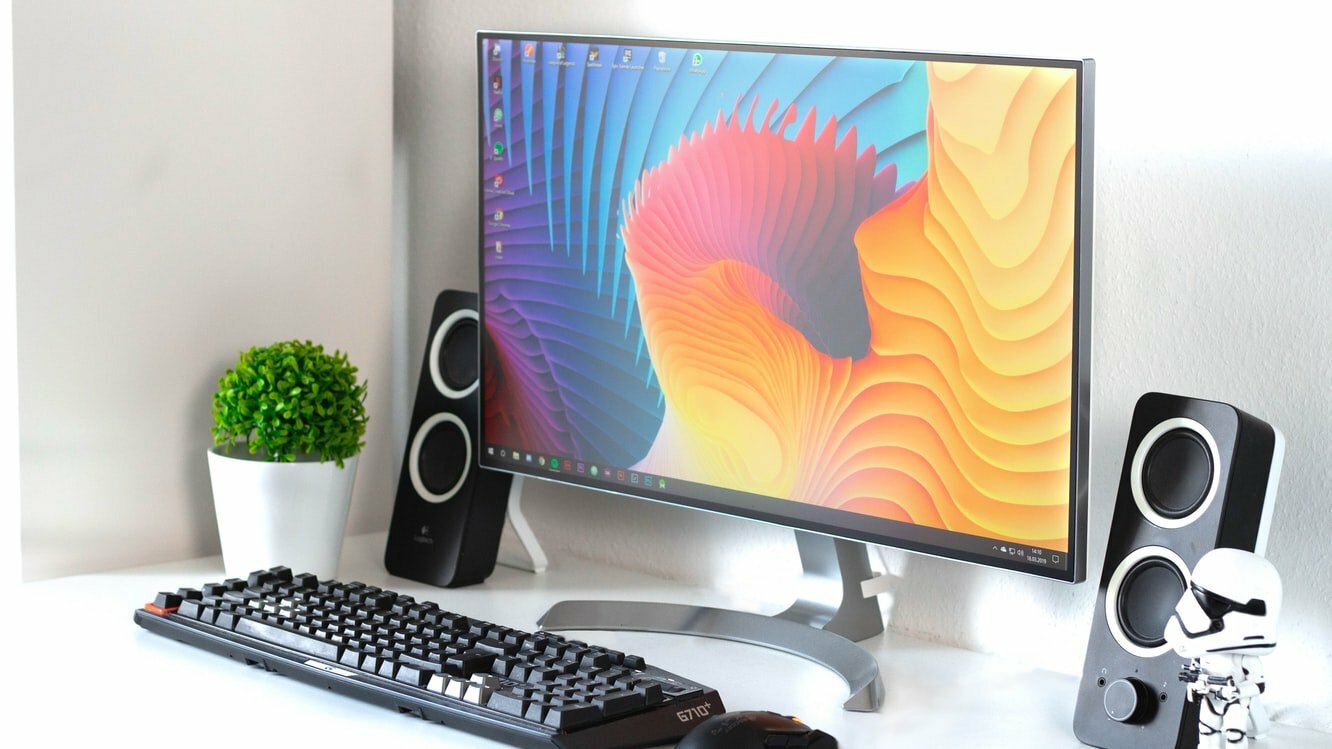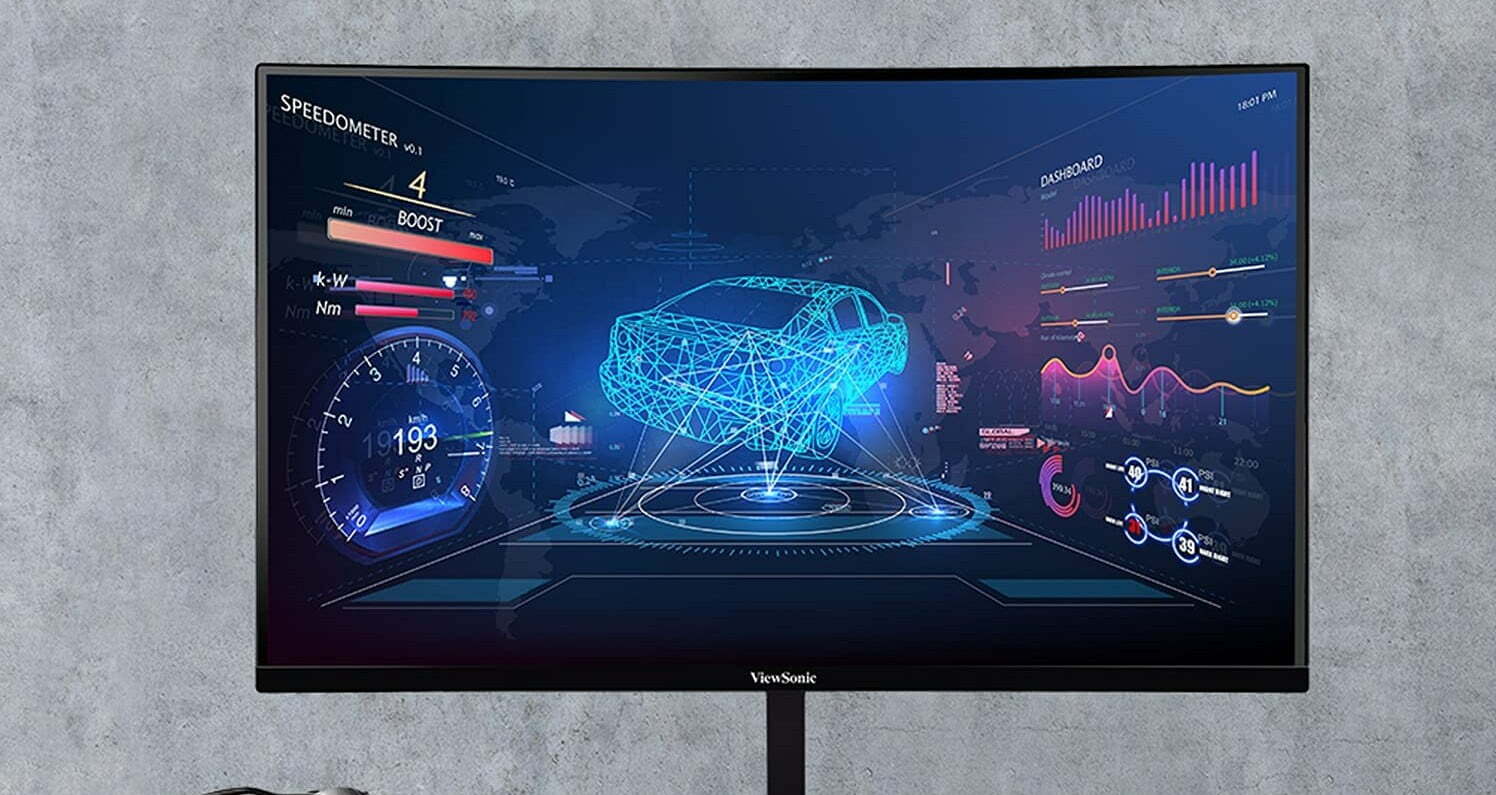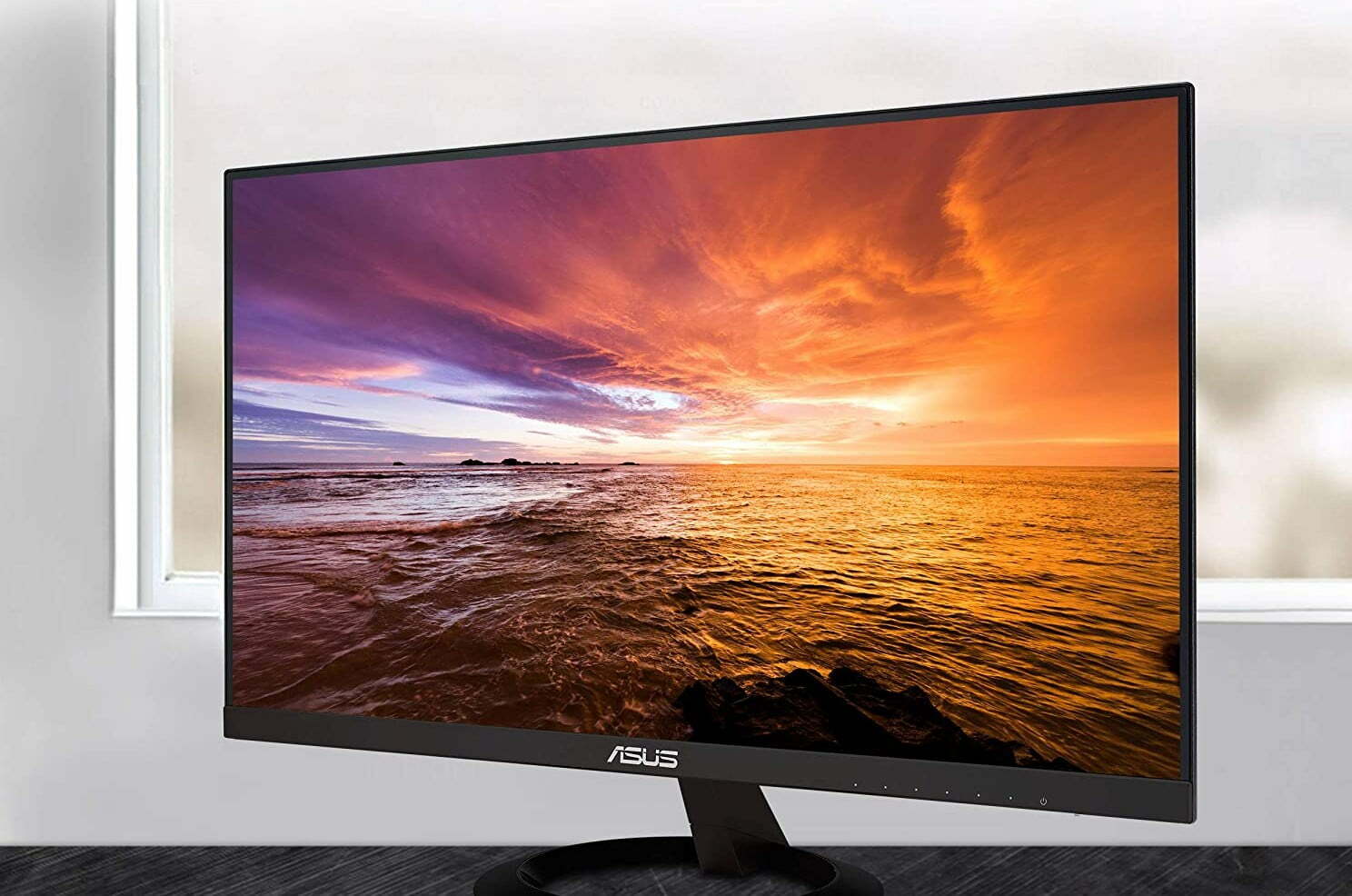If you are shopping around for a new display, you may be looking to compare computer monitors with HDMI vs DVI ports and input connections. The best computer monitors, after all, tend to feature one or both of these port options, in addition to others. Keep reading to learn the differences between the two. If you’re a beginner to all these cable names, check out our guide to monitor ports.
KEY TAKEAWAYS:
- HDMI is a newer technology than DVI, so the maximum data rate transfer speed is much higher.
- Additionally, DVI cannot send audio signals, whereas HDMI can transfer both audio and video signals.
- DVI cables are much larger than HDMI cables, so many smaller gadgets do not have the room to add a port.
Differences Between HDMI and DVI Ports
The primary difference between the two connection types is, well, the connections themselves. DVI cables (digital visual interface) are considered the old standard, having existed HDMI cables became commonplace. Of course, both are currently being usurped by even newer connection types, such as USB-C. As for real-world differences, some will be subtle while others stark, such as when you are comparing glossy vs matte computer monitors.
Plus, HDMI and DVI are far apart from Thunderbolt 3, which is primarily used by Apple computers and devices.
Here are more differences between HDMI and DVI Cables
Insider Tip
Make sure you know which ports your devices include before making a purchase of any cable, especially if the device is older. Most computer monitors in early 2000 used VGA, and there’s a vast difference between VGA vs HDMI in connectivity.
Size
An obvious difference between the two is size. HDMI 2.0 cables are much more compact than DVI cables, allowing them to be used in a wider variety of gadgets, such as laptops and the like. It is rare to find a DVI port on a modern laptop due to its overall size. Of course, micro versions are available for both DVI and HDMI cables, but they may not offer universal compatibility.
Data Transfer Speed
HDMI 2.0 technology is newer and, as such, faster than DVI technology when it comes to digital signals. The latest version of HDMI (2.1) can support a maximum data rate of 42.6 Gbit/sec while DVI has a maximum data rate of 9.9 Gbit/sec. Additionally, this reduced data transfer speed with DVI cables could lower some crucial data metrics, if you are looking to compare the refresh rate vs the response time of a computer monitor.
Image Resolution
The decreased data rate available with DVI cables when compared to HDMI 2.0 does mean the former will be hampered when it comes to ultra-high-definition visuals and their maximum resolutions. The maximum specs DVI can support is 3840×2400 at 30 Hz or 2560×1600 at 60 Hz.
Sound
One of the primary reasons HDMI caught on is that the technology is designed to deliver both audio and video signals at the same time via a single cable, eliminating the need for a dedicated audio cable. The same cannot be said, however, for DVI cables, as they cannot transport audio signals.
F.A.Q.S
Is DVI to HDMI better than HDMI to HDMI?
Though you can convert DVI to HDMI via an adapter, going HDMI to HDMI will be the better choice when it comes to compatibility with a graphics card, high frame rates, and other metrics.
How do I know which DVI cable to buy?
There are not too many different types of DVI cables, so you should be fine with whatever one you choose for your display device. You should, however, make sure you are but buying a mini DVI for your gaming monitors and the like unless warranted.
Which port type is best for monitors?
This depends on your needs and what you are connecting them to. Some older devices may have VGA ports (video graphics array) for analog signals while others may have the older HDMI 1.4 standard.
STAT: DVI’s digital video transmission format is based on panelLink, a serial format developed by Silicon Image that utilizes a high-speed serial link called transition minimized differential signaling (TMDS). (source)
REFERENCES:



































![Best 27 Inch Computer Monitor in [year] 27 Best 27 Inch Computer Monitor in 2026](https://www.gadgetreview.dev/wp-content/uploads/how-to-buy-the-best-computer-monitor.jpg)
![Best BenQ Monitors in [year] 28 Best BenQ Monitors in 2026](https://www.gadgetreview.dev/wp-content/uploads/best-benq-monitor-image.jpg)
![Best ASUS Monitors in [year] 29 Best ASUS Monitors in 2026](https://www.gadgetreview.dev/wp-content/uploads/best-asus-monitor-image.jpg)
![Best Dell Monitors in [year] 30 Best Dell Monitors in 2026](https://www.gadgetreview.dev/wp-content/uploads/best-dell-monitor-image.jpg)
![Best HP Monitors in [year] 31 Best HP Monitors in 2026](https://www.gadgetreview.dev/wp-content/uploads/best-hp-monitor-image.jpg)
![Best Lenovo Monitors in [year] 32 Best Lenovo Monitors in 2026](https://www.gadgetreview.dev/wp-content/uploads/best-lenovo-monitor-image.jpg)
![Best ViewSonic Monitors in [year] 33 Best ViewSonic Monitors in 2026](https://www.gadgetreview.dev/wp-content/uploads/best-viewsonic-monitor-image.jpg)
![Best Gigabyte Monitors in [year] 34 Best Gigabyte Monitors in 2026](https://www.gadgetreview.dev/wp-content/uploads/best-gigabyte-monitor-image.jpg)
![Best Monitors for PS4 Pro Gaming in [year] 35 Best Monitors for PS4 Pro Gaming in 2026](https://www.gadgetreview.dev/wp-content/uploads/best-monitors-for-ps4-pro-image.jpg)
![Best Monitor for Xbox Series X in [year] 36 Best Monitor for Xbox Series X in 2026](https://www.gadgetreview.dev/wp-content/uploads/best-monitor-for-xbox-series-x-image.jpg)
![Best Acer Monitors in [year] 37 Best Acer Monitors in 2026](https://www.gadgetreview.dev/wp-content/uploads/best-acer-monitor-image.jpg)
![Best MSI Monitors in [year] 38 Best MSI Monitors in 2026](https://www.gadgetreview.dev/wp-content/uploads/best-msi-monitor-image.jpg)
![Best SAMSUNG Monitors in [year] 39 Best SAMSUNG Monitors in 2026](https://www.gadgetreview.dev/wp-content/uploads/best-samsung-monitor-image.jpg)
![Best LG Monitors in [year] 40 Best LG Monitors in 2026](https://www.gadgetreview.dev/wp-content/uploads/best-lg-monitor-image.jpg)
![Best AOC Monitors in [year] 41 Best AOC Monitors in 2026](https://www.gadgetreview.dev/wp-content/uploads/best-aoc-monitor-image.jpg)
![Best Philips Monitors in [year] 42 Best Philips Monitors in 2026](https://www.gadgetreview.dev/wp-content/uploads/best-philips-monitors-image.jpg)
![Best Monitors For PUBG in [year] 43 Best Monitors For PUBG in 2026](https://www.gadgetreview.dev/wp-content/uploads/best-monitor-for-pubg-image.jpg)
![Best Stream Decks in [year] 44 Best Stream Decks in 2026](https://www.gadgetreview.dev/wp-content/uploads/best-stream-deck-image.jpg)
![Best Monitors for Streaming in [year] 45 Best Monitors for Streaming in 2026](https://www.gadgetreview.dev/wp-content/uploads/best-monitor-for-streaming-image.jpg)
![Best Monitors For Flight Simulator in [year] 46 Best Monitors For Flight Simulator in 2026](https://www.gadgetreview.dev/wp-content/uploads/best-monitor-for-flight-simulator-image.jpg)




















